Palms are hardy and can survive being root bound. You can help root bound small palms by gently teasing the roots out and moving them to a pot that is one size larger. Larger root bound palms can be moved to a larger pot but take care not to disturb the roots unless they have damage.
This article will explore what to do with root bound palms, how to successfully move them to a new pot and what to do with their roots.
Palms do not like to be root bound but will survive if they are cared for as soon as possible. Palms are hardy and can recover so read on to find out more
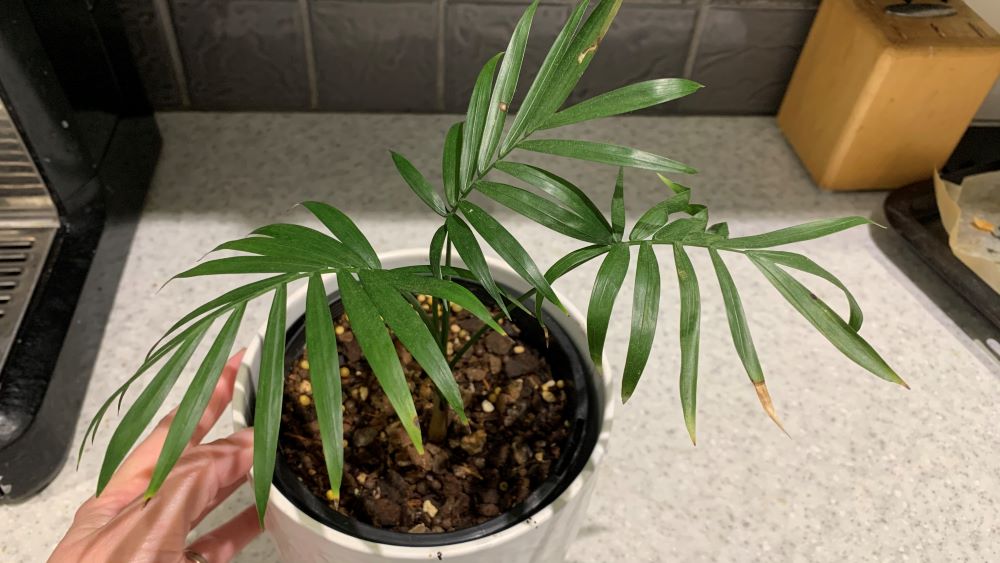
How to save small root bound palms
Root bound palms bought from a garden center can be repotted into a bigger pot. If you have left your palm in its original pot too long you can still save it. Here are my top tips to save small root bound palms.
Soak the palm in a bucket of water with seaweed solution
For a palm that is very dry and root bound the pot can be placed in a bucket of water with just a dash of seaweed solution. This will help to moisten any remaining soil and can make it easier to get the palm out of the pot.
Root bound palms are usually very dry so soaking them in a bucket of water for around 10 minutes can make sure the soil and roots get some much needed water.
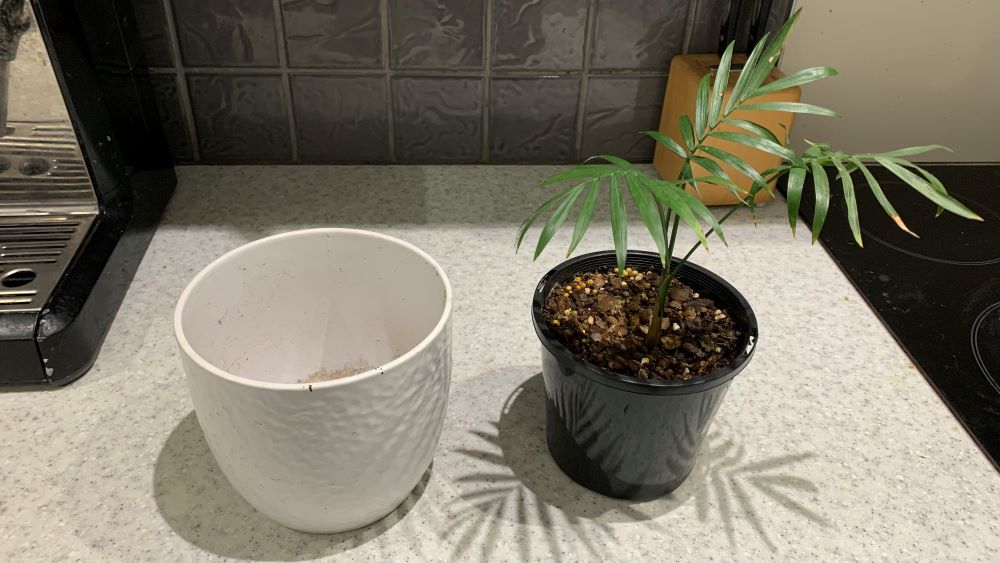
Gently tease out the roots
Smaller palms will be fine if the bottom of their roots are gently teased out. This can send them out to grow in a new direction and it will help them to grow well.
Small palms will recover well when they are repotted. Their roots are fast growing and they will be ready to sprout new ones and grow larger. It is still best to be gentle when teasing out the roots.
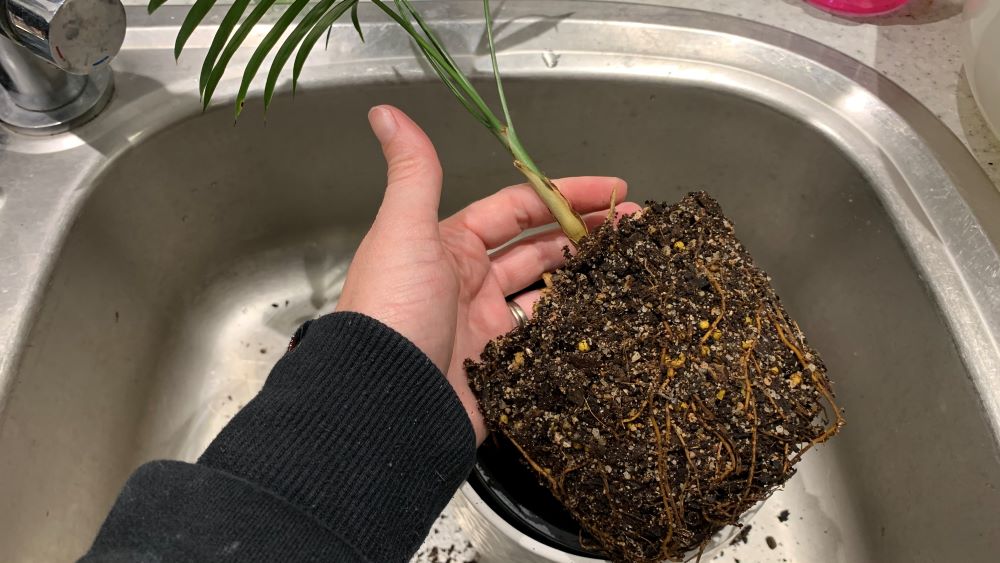
Trim off any damaged roots
Remove any small broken roots that are dangling down to the root ball. Any roots that look broken or damaged can be snipped off with some sharp secateurs. This will make it easier to transplant into a pot and will encourage the root to heal over without becoming diseased.
Palms generally will survive better with minimal root disturbance. Tidy up the root ball to fit the palm in its new pot and it will quickly sprout new roots in new soil.
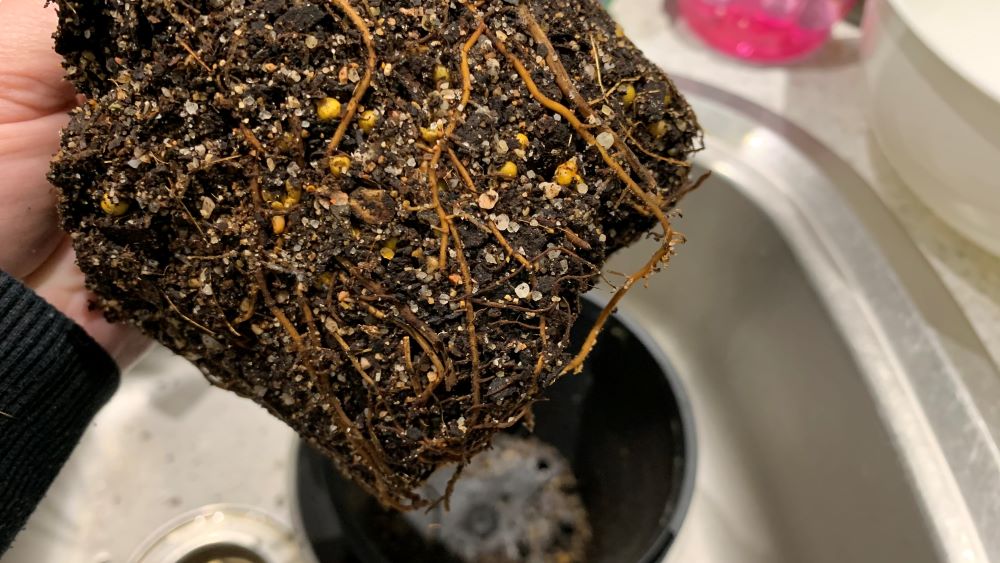
Choose good quality potting soil
The next tip is to plant your palm into the best quality potting soil you can find. Premium potting soil with added slow release fertilizer is perfect because it will be high in nutrients and drain well.
Choose a pot that will allow enough room to layer 1-2 inches of new potting soil on the bottom before placing the palm in the pot. This will give the roots room to grow without adding too much soil which can get too cold.
Backfill the palm gently around the edges of the root ball with the new potting soil. Press the soil in with your fingers to get it to fit down the edges of the palm roots and fill any air gaps.

Water well for the first week
Start by watering the palm well after you have finished potting it into its new pot. This will settle the potting soil around the root ball and fill any air gaps.
For indoor palms, water the palm again in 3-4 days or once the soil starts to dry. Most indoor palms do well with being watered once per week but this will depend on the temperature and humidity in your home.
Outdoor palms can benefit from watering 2-3 times in the first week, particularly if you have repotted them in summer. Palms in pots will dry out quicker than those in the ground so keep an eye on them and add water when the first few inches of the soil is dry.
Outdoor palms can need watering every few days in very hot, dry summers or only once or twice per week if you get good rainfall.
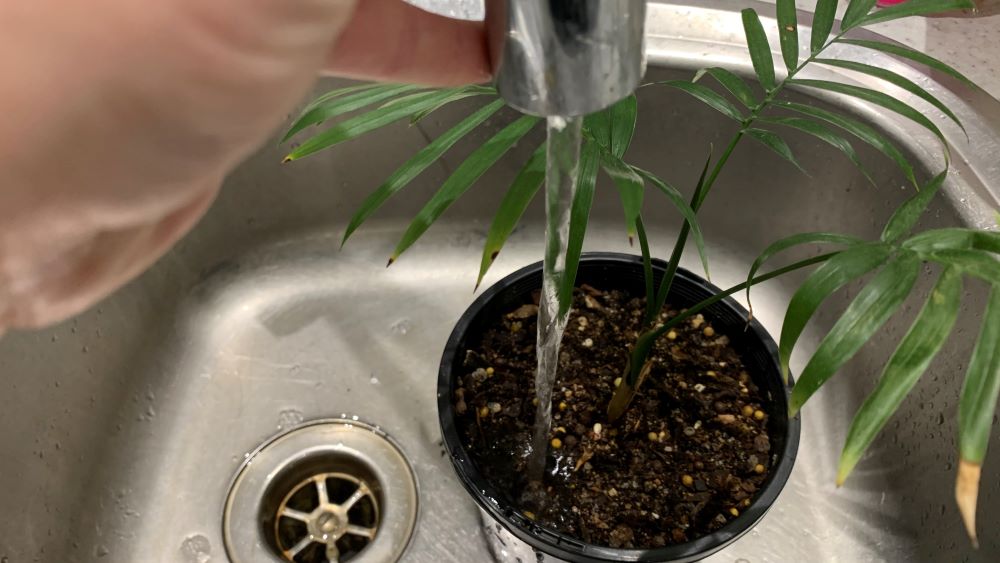
How to save large root bound palms
Large root bound palms that have root balls bigger than 1 foot wide can also be saved. Most palms are incredibly hardy but still do not like root disturbance.
The best way to deal with large root bound palms is to tip the palm on its side and gently remove it from the pot by tapping the pot edges.
Once the palm has been removed any large, damaged roots can be trimmed otherwise leave the roots alone as much as you can to allow the palm to recover on its own.
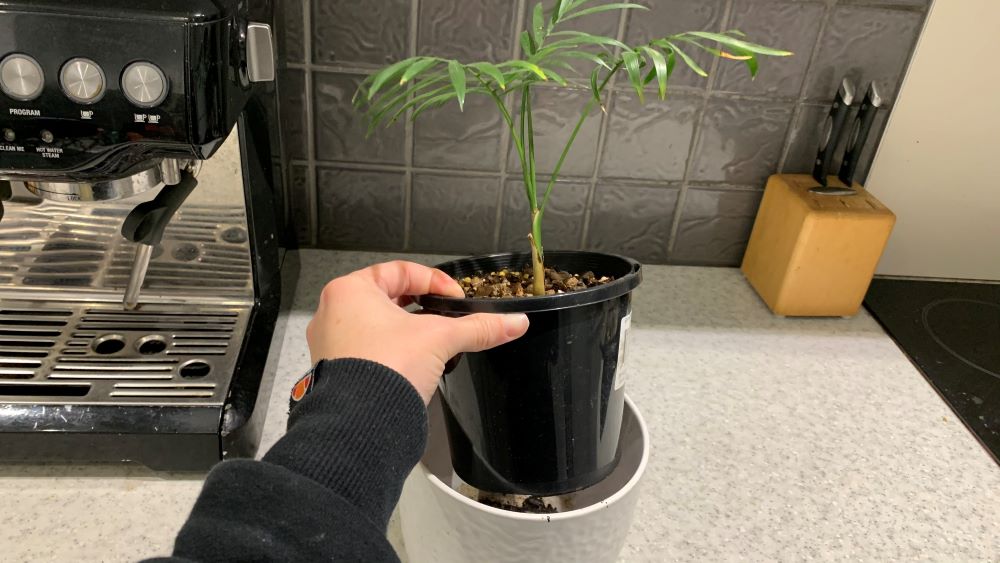
Choose a pot that offers 3-4 inches of space around the base and sides and move the palm into the pot with new potting soil.
Golden cane palms will survive repotting and a ‘root tidy up’ when repotted. The general rule for all palms is to leave the roots alone as much as you can once they are larger. A large palm will be more sensitive to root disturbance than a small one.
Do palms like to be root bound?
Palms do not like to be root bound but some will survive better than others if this happens. Golden cane palms for example will survive becoming root bound but will benefit from being moved to another pot.
Palms can tolerate having their roots pruned but will grow better if they are given fresh soil and more room in a larger pot.
Root bound palms | Summary
Palms can quickly become root bound if they are not repotted every 3-4 years. While palms do not like being root bound in the long run they can recover if they are moved to a pot that is once size bigger and given more potting soil to grow in.
The key to success is to use a good quality potting soil, only increase the pot size by a few inches and water the plant well to settle it in. A good slow release fertilizer like pelleted chicken manure given to your palms in spring will help to speed up growth and recovery,
Water the palm with seaweed solution in the beginning to help with root recovery.
Happy growing.
I am an accredited practicing dietitian, experienced gardener and a dedicated cook. I love writing and sharing my experience so you can learn from my successes and mistakes.
